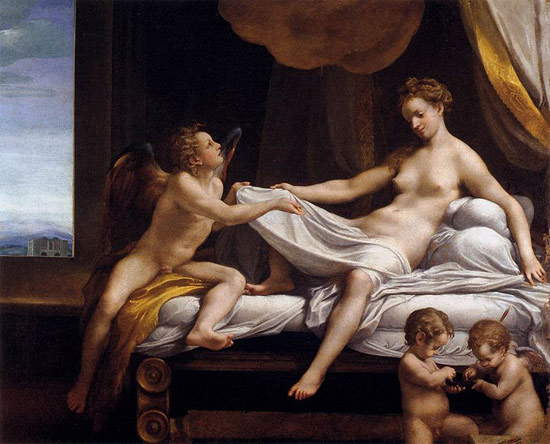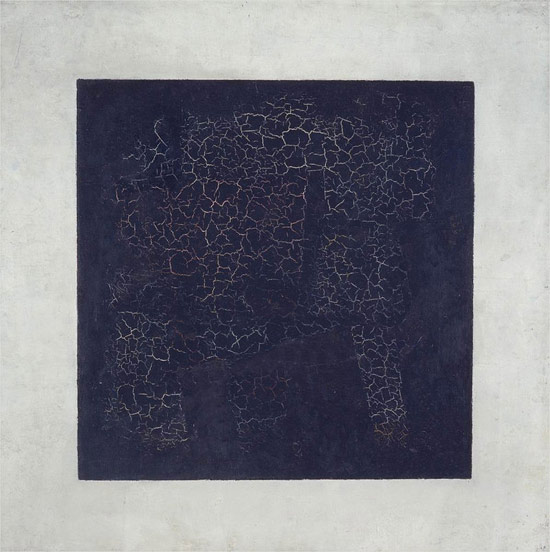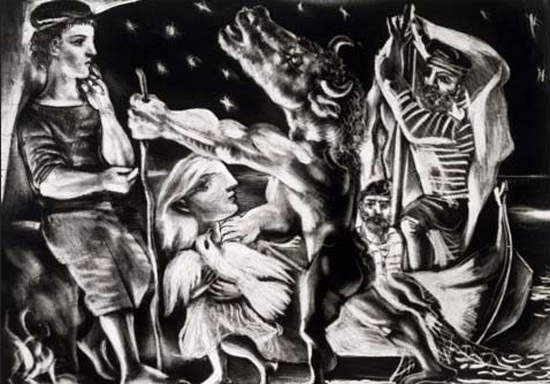I got to know Soviet Soviets relatively recently, that is, in 2014, when I saw them for the first time in concert, in my neck of the woods. However, they have been in activity since 2008, and since I consider them the best Italian band among those that have formed in the last fifteen years at least, I always try to follow them with constant attention, also (and especially) live, because each of their concerts (as well as each of their songs) is an evocative experience bordering on the oneiric, a whirlwind of alienating melodies that even in their rapidity retain a certain amount of melancholy, an “introspective journey” (as per the title of one of their songs) that probes the human soul with lyrics that refer to feelings and experience, always through metaphors of the highest lyricism. I was therefore happily surprised to find out about their collaboration with another artist worthy of all esteem, Immanuel Casto, for a song, titled Red, Gold and Black, released last summer and included in The Pink Album, the Lombard singer-songwriter’s eighth album. It is a cover of a well-known song by Einstürzende Neubauten, Sabrina, dating back to 2000 and part of the album Silence is Sexy. With the voice of the “chaste divo” (to which is added, in the finale, that of Andrea Giometti of Soviet Soviet who repeats, as if alienated, the brief refrain of Sabrina) and with the music entrusted to the Pesaro-based group, Sabrina is revisited in an electronic and almost shoegaze key, with lyrics adapted into Italian, with atmospheres that recall those of the more typical works of Soviet Soviet and are amended by that gloom that characterizes the song by Einstürzende Neubauten. In essence: a powerful and dreamy new wave actualized and endowed with that Mediterranean vagueness that every Italian artist, more or less unconsciously, imprints on their music.
Sabrina is a song steeped in artistic references, which uses hermetic lyrics, therefore not easy to interpret, to let a message seep out that conveys disillusionment and discouragement but, perhaps, leaves open a small glimmer of hope. Red, gold and black, the three protagonists of the original song, later included in the cover’s title, are the colors of the German flag: Germany is the country of origin of Einstürzende Neubauten. Each verse of the song is dedicated to one of the three colors, with which certain characteristics are associated. Red andgold convey positive images: the former is associated with "the dying sun "(the dying sun in the original), it evokes the beauty of a sunset, the vitality of “the blood pumping in the heart”(the red of which we bleed, literally “the red of which we bleed”), it is the color of a “stain on the sheets”(the morning sheet’s surprising stain, the “surprising stain on the sheets in the morning”) loaded with erotic references, or it is the cheerful red of a cabernet(the red of cabernet sauvignon), as well as the precious and sparkling red of a ruby(a world of ruby).
Gold also carries within it a meaning that alludes, at the same time, to sexuality and fecundity: the reference is to the myth of Jupiter and Danae, which tells how the father of the gods had descended from the sky, in the form of a shower of gold (the Zeus’ famous shower mentioned in the lyrics of Einstürzende Neubauten), to join the beautiful girl. The union, from which the hero Perseus would be born, has been a source of inspiration for a great many artists, from all times and places: the first examples that come to mind are those of Titian (at the Museo Nazionale di Capodimonte in Naples) and Correggio (at the Galleria Borghese in Rome). We do not know what exactly was the image the German band had in mind, but certainly, given their extensive art-historical culture (which leaks out not only from the songs: the cover of one of their albums, Tabula rasa, features a still life by the Dutch Ambrosius Bosschaert) it comes naturally to imagine that the band members must have had depictions of myth in mind. Gold is, moreover, the color of memories and remembrance (a particularly fortunate period is, after all, “a golden age”), and especially that of theGolden Age, which, according to a myth that originated in classical antiquity and had considerable success even in the German area, would have been an age of great prosperity, peace and harmony (in the song: "it’s not as golden as memory / or the age of the same name").
 |
| Correggio, Jupiter and Danae (c. 1531-1532; oil on canvas, 161 x 193 cm; Rome, Galleria Borghese) |
 |
| Lucas Cranach the Elder, The Golden Age (c. 1530; oil and tempera on panel, 74 x 106 cm; Munich, Alte Pinakothek) |
According to Einstürzende Neubauten statements, the lyrics of Sabrina revolve around a question: what color can be assigned to sounds. The song is clear: the two lines it ’s not that red and it ’s not that gold, referring to the images mentioned above, exclude that red and gold are the right colors. But at the same time a wish is made: I wish this would be your color, a phrase that, in the adaptation by Immanuel Casto and the Soviets, is translated literally (“I wish this would be your color”) and that reveals all the melancholy of the text. In essence, in the present, and particularly in that of Germany, there would be no room for vitality, eroticism, joy, and the sparkle of red and gold: the only possibility is that of a somber blackness, reminiscent of Malevič’s Square, the "cold furnacein which we stare"(the cold furnace in which we stare: probable allusion to Germany’s terrible Nazi past), a fairy tale told on a starless winter’s night(it is a starless winternight’s tale).
The reference to Russian painter Kazimir Malevič’s Black Square is particularly interesting. When the artist presented it in 1915, his intent was very clear: to completely reset previous artistic experiences, to reject traditional painting, to lay the groundwork for an avant-garde language that could aspire to become the art of the future. A language that was to result in the “supremacy of pure sensibility in the figurative arts”: hence, the name"Suprematism" given to the movement of which Malevič was the father. After 1917, the year of the Russian revolution that changed the country’s fortunes, the painter still had confidence in the future, but this confidence began to wane when the regime began to lash out at him and his art, deeming it ideologically incompatible with the demands of the new establishment. Even, in 1930 the artist was arrested and interrogated. As a result, in the last years of his activity, in order to avoid further heavy repercussions, Malevič was forced to return to a figurativism in line with the political dictate of the Soviet Union, but foreign to his sensibility. The “black square” mentioned in the song thus conveys distressing meanings: it can be understood as a symbol of hope in the future destined, however, to find no fulfillment. Black is ultimately the color that "suits you well"(it suits you well) to the reality of the present.
 |
| Kazimir Malevič, Black Square (1915; oil on canvas, 79.5 x 79.5 cm; Moscow, Tret’jakov Gallery) |
One may therefore wonder why, in the original, the title of the song bears the name of a woman. It is interesting at this point to try to understand the video clip: the protagonist is a monstrous minotaur who tries to adorn himself with a red lipstick and a gold one but, in the end, realizing that these accouterments cannot mellow his bestial nature, he indulges in a desperate cry. One of the turning points of the video occurs when Blixa Bargeld, the lead singer of Einstürzende Neubauten, enters the scene: completely dressed in black, he begins to wash his hands under the eyes of the minotaur, who begins to cry after seeing him. The entire video can be interpreted as a continuous allegory: the minotaur is a creature associated with brutality and feral instincts, as was the case in Pablo Picasso’s art. An emblem of violence and destructive force, in Picasso the minotaur was nevertheless a being undermined by fragility: in fact, his own violence ended up winning him over and reducing him to such a state of blindness that he was forced to be guided by a little girl, a symbol of innocence and purity. Sabrina ’s minotaur is also a fundamentally fragile creature: it is possible to see in being a personification of Germany (and probably owes the name of the song to this: the nation is seen as a woman trying to make herself more beautiful), trying to redeem herself from her dark past. The latter, however, comes in the form of a disturbing figure dressed in black, and the minotaur realizes that the shadows of the past have not been entirely erased: the creature is thus, as in Picasso, a victim of itself, and the final consequence can only be bitter weeping.
 |
| Pablo Picasso, Minotaur Led by a Little Girl (1934-1935; aquatint; Santa Barbara, Santa Barbara Museum of Art) |
It would not be the first time that the myth of the minotaur has fascinated musicians: we had also talked about it in connection with a concept by David Bowie. But it is equally true that the lyrics of Einstürzende Neubauten always have that characteristic ambiguity that leaves the listener free to interpret the words of the text in the way he or she sees fit and satisfactory. However, whatever its meaning, everyone can agree that Sabrina is a wonderful song that exudes love and passion: despite the lack of a happy ending, the hope that black can be replaced by red and gold is repeated even on the finale, with the phrase I wish this would be your color. And the reinterpretation signed by Immanuel Casto and Soviet Soviet gives full credit to the work of Einstürzende Neubauten.
Warning: the translation into English of the original Italian article was created using automatic tools. We undertake to review all articles, but we do not guarantee the total absence of inaccuracies in the translation due to the program. You can find the original by clicking on the ITA button. If you find any mistake,please contact us.